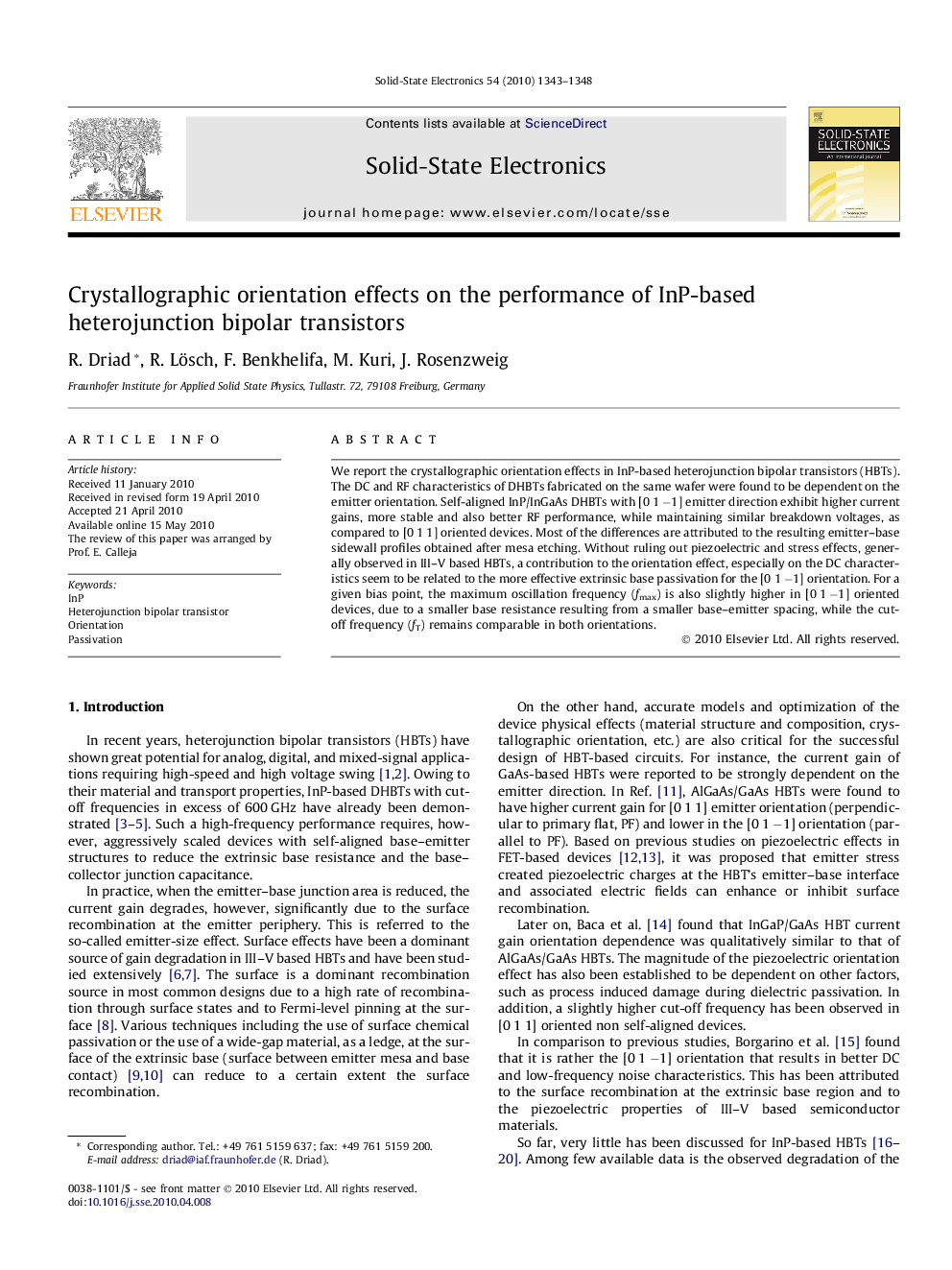| Article ID | Journal | Published Year | Pages | File Type |
|---|---|---|---|---|
| 753187 | Solid-State Electronics | 2010 | 6 Pages |
We report the crystallographic orientation effects in InP-based heterojunction bipolar transistors (HBTs). The DC and RF characteristics of DHBTs fabricated on the same wafer were found to be dependent on the emitter orientation. Self-aligned InP/InGaAs DHBTs with [0 1 −1] emitter direction exhibit higher current gains, more stable and also better RF performance, while maintaining similar breakdown voltages, as compared to [0 1 1] oriented devices. Most of the differences are attributed to the resulting emitter–base sidewall profiles obtained after mesa etching. Without ruling out piezoelectric and stress effects, generally observed in III–V based HBTs, a contribution to the orientation effect, especially on the DC characteristics seem to be related to the more effective extrinsic base passivation for the [0 1 −1] orientation. For a given bias point, the maximum oscillation frequency (fmax) is also slightly higher in [0 1 −1] oriented devices, due to a smaller base resistance resulting from a smaller base–emitter spacing, while the cut-off frequency (fT) remains comparable in both orientations.
